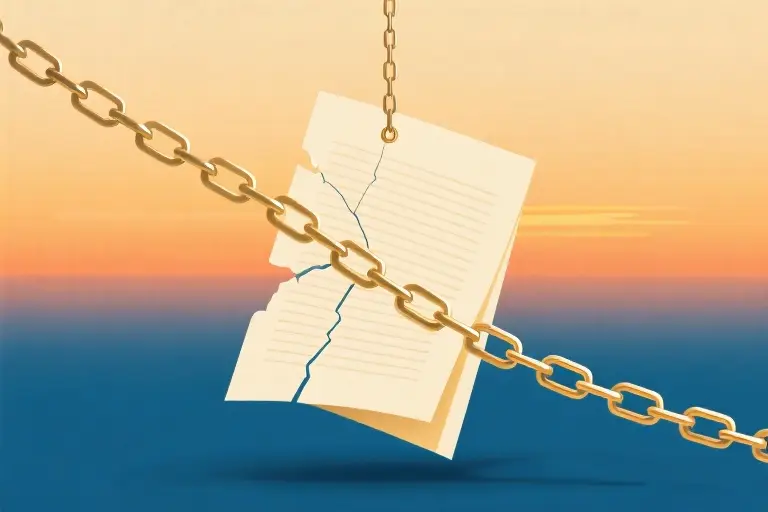The email hit my inbox on a Tuesday morning. “We truly value your work, but need to place the $8,000 content project on temporary hold…” The familiar corporate politeness couldn’t mask the reality – my carefully planned income stream just evaporated. Again.
This wasn’t my first rodeo. In sixteen years of freelancing across writing, editing and voice-over work, I’ve learned one hard truth: when clients say “temporary pause,” they usually mean “permanent goodbye.” Either budgets get slashed like a DIY haircut, or – more often – someone cheaper has entered the picture.
The global freelance marketplace operates on brutal economics. While I charge professional rates reflecting my experience, there’s always someone willing to work for exposure, five-dollar gigs, or wages that wouldn’t cover my coffee habit but represent living money elsewhere. And honestly? That’s okay.
Not every project needs a seasoned writer. Some content jobs are like handing a gourmet chocolate truffle to a kid who’d rather have the fluorescent gummy frog – the premium quality gets lost on the recipient. Those thousand-word product descriptions for cleaning supplies? The generic blog posts churned out for content mills? Those aren’t the battles worth fighting.
But when substantial projects with good clients suddenly freeze, it stings differently. The financial instability creeps in first, followed by that nagging question: How do we freelancers build careers when the ground keeps shifting beneath us?
The answer starts with recognizing you’re not alone. A 2022 Pew Research study found 72% of freelancers experience unexpected project pauses annually. The causes range from corporate restructuring to that silent killer of creative careers – the discovery of “good enough” cheaper alternatives.
What separates thriving freelancers from struggling ones isn’t avoiding these disruptions, but developing systems to:
- Minimize their occurrence (through client vetting and contract safeguards)
- Mitigate their impact (with emergency plans and psychological resilience)
- Pivot strategically (using pauses as opportunities to upgrade your client base)
Over the next sections, we’ll break down actionable strategies for each phase. Because in today’s volatile gig economy, your safety net isn’t a corporate HR department – it’s the systems you build between projects.
Why Freelance Projects Keep Getting Paused: The Harsh Realities
That email notification still stings a little. “We’re putting the project on hold temporarily…” followed by the corporate version of “it’s not you, it’s us.” After sixteen years in this game, I’ve learned one truth: when clients say “pause,” they usually mean “stop.” And you deserve to understand why.
The Budget Chop: 3 Real Scenarios Behind “Sudden” Freezes
- The Vanishing Allocation (Most Common)
- Department budgets get slashed mid-quarter like a bad haircut
- Marketing often takes the first hit – my $8K project casualty was collateral damage
- Telltale sign: Your contact suddenly needs “approvals from finance”
- The Priority Shuffle
- Leadership pivots focus (hello, quarterly panic!)
- Your content project loses to flashier initiatives
- Red flag: Requests to “tweak the deliverables” keep coming
- The Silent Replacement
- They found someone cheaper (we’ll talk globalization next)
- Usually happens after initial deliverables are received
- Dead giveaway: Sudden radio silence on revisions
Global Competition: Why $5 Writers Are Winning Jobs
The uncomfortable math:
- My hourly rate = a week’s wages in some countries
- Platforms like Fiverr algorithmically promote lowest bids
- Clients optimizing for “good enough” over “great”
But here’s what they don’t tell you:
- Many bargain freelancers reuse/repurpose content
- Language barriers create hidden revision costs
- You can’t compete on price – and shouldn’t try
The Chocolate Truffle vs. Frog Candy Principle
Understanding demand tiers saves your sanity:
| Client Need | Writer Fit | Outcome |
|---|---|---|
| Bulk product descriptions (Frog candy) | New writers building portfolios | High turnover, low satisfaction |
| Thought leadership (Artisan truffle) | Seasoned specialists | Loyal clients, premium pricing |
Most project pauses happen when:
- Premium writers chase frog candy gigs
- Clients expect truffle quality at candy budgets
Cold comfort: Losing those mismatched projects creates space for better fits. Last month’s paused $8K project? Replaced by a $12K engagement with a client who valued strategic input over word count.
“The projects that walk away often clear the path for work that won’t treat you as disposable.”
This isn’t about blaming clients or undercutting competitors. It’s about recognizing the market forces at play so you can position yourself where your skills command respect – not just tolerance.
Defense Strategies: 3 Ways to Stop Being an “Option”
Freelancing often feels like walking a tightrope without a safety net. One day you’re cruising through an $8,000 project, the next you’re staring at an email that says “we’re putting things on hold.” After sixteen years in this game, I’ve learned three fundamental strategies to transform from a disposable option to an indispensable partner.
1. Contract Clauses: Your Legal Safety Net
Never start work without these three contract essentials:
a) The 50/30/20 Payment Structure
- 50% upfront (non-refundable retainer)
- 30% at milestone approval
- 20% upon final delivery
Why it works: Clients invest psychologically when they pay upfront. My paused $8K project? They’d paid $4,000 already – which made them far more motivated to resume work later.
b) The “Zombie Clause”
“If project remains inactive for 60 days, all rights revert to creator unless extension fees (25% of total) are paid.”
Real-world benefit: Prevents clients from indefinitely holding your work hostage while they “figure things out.”
c) The Swiss Army Termination Clause
“Either party may terminate with 14 days written notice. Creator retains all payments for work completed and licenses granted become perpetual upon 50%+ payment.”
Pro tip: This creates graceful exits while protecting your income.
2. Client Filtering: Spotting High-Value Partners
Look for these five behavioral green flags:
- They articulate problems, not solutions
Instead of “We need 10 blog posts,” they say “Our target audience isn’t engaging with technical jargon.” This signals they value your expertise. - They ask about your process
Questions like “How do you typically handle revisions?” indicate respect for your working style. - They mention long-term needs
Phrases like “We foresee ongoing content needs” suggest relationship potential beyond one project. - They have dedicated budgets
“Our content budget is approved through Q3” beats “We’ll see how this first piece performs.” - They reference your specific work
“We loved how you handled complex topics in your piece for [Industry]” shows they didn’t just find you via random search.
Red flag alert: When prospects say “We’re testing several writers,” politely decline. You’re not auditioning.
3. Portfolio Curation: Beyond the PDF Dump
Transform your portfolio from a static document into a strategic asset:
a) The “Before & After” Showcase
For each sample, include:
- Original client brief/problem
- Your strategic approach
- Measurable outcomes (e.g., “37% increase in time-on-page”)
b) The Niche Deep Dive
Create 2-3 specialized collections (e.g., “Fintech Whitepapers” or “Healthcare Content for Seniors”). This positions you as an expert, not a generalist.
c) The Living Case Study
Quarterly, publish a free mini-report analyzing industry trends (e.g., “2024 B2B Content Consumption Shifts”). Share it proactively with ideal clients – it demonstrates ongoing expertise.
Pro move: For voice work, include a “style spectrum” audio reel showing range from corporate narration to playful character voices.
Key Takeaway: Defense isn’t about paranoia – it’s about creating structures where both you and serious clients thrive. Implement these strategies systematically, and you’ll notice two shifts: fewer “pause” emails, and more clients saying “We need your specific brain on this.”
Crisis Management: Your 72-Hour Action Plan When Projects Get Paused
That sinking feeling when the “project pause” email arrives never gets easier. Here’s how to transform panic into productive action during those critical first three days.
The First Conversation: Scripts That Get Answers
Email Template (Professional Yet Direct)
Subject: Following Up on [Project Name] Timeline
Hi [Client Name],
Thank you for the update. To help me plan my workload, could you share:
1. The primary reason for the pause (budget/strategy/timing)?
2. Any anticipated next steps or decision dates?
3. If there are smaller tasks I can complete during this interval?
I value our collaboration and want to ensure alignment. Let me know a good time to discuss briefly.
Best,
[Your Name]Phone Call Talking Points
- Frame it as planning: “I’m reorganizing my schedule and wanted to understand…”
- Listen for code words: “Exploring other options” = replacement found; “Budget review” = 50% chance of resuming
- Offer flexibility: “Would splitting deliverables into phases help?”
3 Emergency Income Streams to Bridge the Gap
- Micro-Projects on Specialized Platforms
- Contra: For 1-3 day strategy consultations ($300-$800)
- Upwork Pro: Curated short-term requests from vetted clients
- Newsletter swaps: Offer guest writing for established creators (immediate visibility)
- Leverage Existing Assets
- Repurpose unused drafts into Medium posts (Example: Turn paused whitepaper research into 3 LinkedIn articles)
- Sell templates from past projects (Check Payhip or Gumroad for digital products)
- The 24-Hour Service Sprint
- Email 5 past clients: “I have unexpected capacity this week for quick-turnaround projects”
- Post limited-time offer: “72-hour content tune-up: 3 pieces edited/formatted for $X” (Use Twitter/Threads for quick visibility)
The Project Valuation Framework
Downloadable Decision Matrix ([Google Sheets template link] helps assess:
| Factor | Weight | Score (1-5) | Notes |
|---|---|---|---|
| Financial Impact | 30% | ⭐️⭐️⭐️ | Covers 20% monthly goal |
| Portfolio Value | 25% | ⭐️⭐️⭐️⭐️ | Showcases niche expertise |
| Client Potential | 20% | ⭐️⭐️ | One-off project |
| Mental Load | 15% | ⭐️⭐️⭐️⭐️⭐️ | High-maintenance contact |
| Growth Alignment | 10% | ⭐️ | Outside focus area |
Scoring Guidance
- 65+ points: Worth aggressive follow-up
- 40-64: Maintain polite contact
- <40: Archive and move on
Psychological Reset Techniques
- The “5-Minute Rant Rule”: Set a timer to vent, then shift to solutions
- Opportunity Cost Visualization: Calculate hours you’ll reclaim (“This pause just gifted me 40 hours for [better project]”)
- Client Segmentation: Label them “Growth”, “Maintenance”, or “Energy Drain” in your CRM
Remember: Not every project deserves resurrection. Sometimes the healthiest response is a professional “I understand” followed by strategic silence.
Navigating the Future: Protecting Your Rates in the Age of AI and Global Competition
Freelancing isn’t what it used to be. Over the past five years, platforms like Upwork and Fiverr have seen a 37% increase in registered freelancers globally (Statista, 2023), creating what many veteran writers call ‘the race to the bottom.’ But here’s what the data won’t tell you – while entry-level writing jobs now average $5-15 per piece, strategic content consultants are charging $150-$500 per hour. The difference? Understanding where AI and globalization can’t compete.
The Numbers Every Freelancer Should Know
A 2023 Payoneer survey revealed three critical trends:
- Rate polarization: 68% of freelancers report decreased rates for basic content, while 22% specializing in strategy/consulting increased fees by 30%+
- Geographic arbitrage: Clients save 60-80% outsourcing to emerging markets for generic writing tasks
- AI adoption: 41% of businesses now use tools like Jasper for first drafts, primarily for product descriptions and social posts
These aren’t threats – they’re roadmaps showing where not to compete. When $5 writers and AI tools handle basic content, your survival depends on moving upstream.
3 Writing Skills AI Can’t Replicate (Yet)
- Emotional Intelligence Writing
- Client example: A grief support startup needed website copy that balanced hope with raw honesty. AI generated sterile “We understand your pain” templates. The solution? Interviewing actual bereaved users and weaving their phrases into the narrative.
- How to develop it: Practice ’empathy interviews’ with clients’ customers, then mirror their vocabulary in your drafts.
- Strategic Story Architecture
- Why it matters: AI can write paragraphs but can’t design content ecosystems. A fintech client needed 12 interconnected whitepapers leading readers toward premium services. The $15/article writers produced disjointed pieces; the strategic consultant mapped a ‘content ladder’ that increased conversions by 27%.
- Exercise: Reverse-engineer successful content campaigns (like HubSpot’s inbound marketing guides) to study their connective tissue.
- Cultural Code-Switching
- Real-world case: A US skincare brand failing in Japan didn’t need translated copy – they needed someone who understood that ‘anti-aging’ is taboo in Japanese beauty discourse. The solution? Repositioning their serum as “enhancing traditional beauty rhythms.”
- Training tip: Study cultural dimensions theory (Hofstede Insights) to anticipate these landmines.
From Writer to Consultant: Your Transition Roadmap
Phase 1: Audit Your Existing Work
- Identify projects where you:
- Conducted stakeholder interviews
- Aligned content with business KPIs
- Made strategic recommendations beyond writing
- Repackage these as “content strategy case studies”
Phase 2: Build Your Advisory Toolkit
- Must-learn frameworks:
- MECE (Mutually Exclusive, Collectively Exhaustive) for content taxonomy
- Jobs-To-Be-Done for audience analysis
- TOV (Tone of Voice) positioning matrices
- Certification options: Content Marketing Institute’s Strategy course ($599) or self-study via Harvard Business Review’s ‘Client Advisory Skills’ articles
Phase 3: Price the Transformation
- Starter positioning (6-12 months):
- Offer “Content Strategy Audits” at $800-$1,200 (versus $0.10/word)
- Bundle writing with monthly “Editorial Advisory Hours”
- Mature positioning (1-2 years):
- Retainer-based “Content Directorship” at $3,000-$8,000/month
- Performance-priced campaigns (e.g., $15,000 + 2% of sales increase)
Your Anti-Obsolescence Checklist
- Quarterly Skill Audit
- Ask: “Could a reasonably trained overseas freelancer or AI tool do this?” for each service
- Keep only tasks requiring cultural nuance, strategic thinking, or emotional resonance
- Client Portfolio Pruning
- Gradually replace price-sensitive clients with those who:
- Have complex content ecosystems (multiple products/audiences)
- Operate in regulated industries (finance, healthcare)
- Value proprietary methodologies
- Income Stream Diversification
- 70/20/10 model:
- 70%: High-touch consulting
- 20%: Scalable products (templates, workshops)
- 10%: Experimental collaborations (speaking, co-creation)
The freelance apocalypse isn’t coming – it’s already here for those competing on price and volume. Your escape route? Becoming the content equivalent of a Michelin-starred chef in a world of fast-food chains. They might automate the burger flippers, but they’ll always need someone who understands the subtle alchemy of flavor, ambiance, and experience.
Action Step: This week, identify one project in your portfolio that demonstrates strategic thinking (not just writing skill). Rewrite its description using consulting terminology like “content ecosystem design” or “audience conversion pathways.”
Wrapping It Up: Not Every Project Is Worth Saving
After navigating the turbulent waters of freelance project cancellations, one truth stands clear: not all work is created equal. The $8,000 project that vanished into thin air? The client who replaced you with a $5 writer? Those aren’t failures—they’re filters.
Key Takeaways to Carry Forward
- Selective Acceptance = Professional Preservation
- Just as boutique chocolates aren’t for every occasion, your expertise isn’t needed for every project. Missing out on low-value gigs protects your time for clients who truly appreciate premium work.
- Your Contract Is Your Safety Net
- We’ve covered essential clauses like termination notices and kill fees. Download our contract template to implement these safeguards immediately.
- The 72-Hour Rule for Project Pauses
- When a project freezes, use our Project Value Assessment Sheet to decide whether to fight for revival or walk away gracefully.
A Final Thought Before You Go
Global competition and AI tools will keep reshaping our industry, but your unique perspective is irreplaceable. The writer who crafts strategy alongside sentences? The editor who understands cultural nuance? That’s where the future lies.
Your Turn:
What’s your go-to move when a project gets paused? Share your story in the comments—let’s turn these frustrations into collective wisdom.
P.S. Need those resources again?





